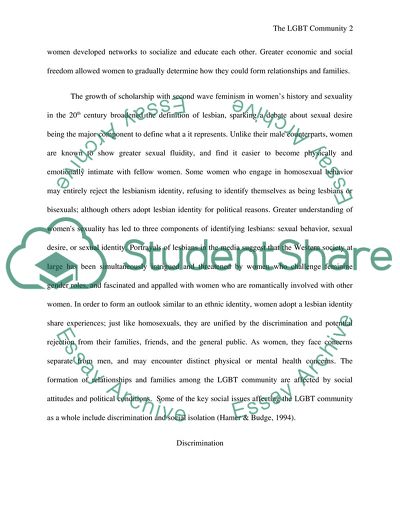Cite this document
(The Lesbian, Gay, Bisexual, Transgender Community Case Study Example | Topics and Well Written Essays - 2250 words, n.d.)
The Lesbian, Gay, Bisexual, Transgender Community Case Study Example | Topics and Well Written Essays - 2250 words. https://studentshare.org/gender-sexual-studies/1759131-family-issues-and-discrimination-in-the-lesbian-gay-bisexual-transgender-lgbt-community
The Lesbian, Gay, Bisexual, Transgender Community Case Study Example | Topics and Well Written Essays - 2250 words. https://studentshare.org/gender-sexual-studies/1759131-family-issues-and-discrimination-in-the-lesbian-gay-bisexual-transgender-lgbt-community
(The Lesbian, Gay, Bisexual, Transgender Community Case Study Example | Topics and Well Written Essays - 2250 Words)
The Lesbian, Gay, Bisexual, Transgender Community Case Study Example | Topics and Well Written Essays - 2250 Words. https://studentshare.org/gender-sexual-studies/1759131-family-issues-and-discrimination-in-the-lesbian-gay-bisexual-transgender-lgbt-community.
The Lesbian, Gay, Bisexual, Transgender Community Case Study Example | Topics and Well Written Essays - 2250 Words. https://studentshare.org/gender-sexual-studies/1759131-family-issues-and-discrimination-in-the-lesbian-gay-bisexual-transgender-lgbt-community.
“The Lesbian, Gay, Bisexual, Transgender Community Case Study Example | Topics and Well Written Essays - 2250 Words”. https://studentshare.org/gender-sexual-studies/1759131-family-issues-and-discrimination-in-the-lesbian-gay-bisexual-transgender-lgbt-community.


